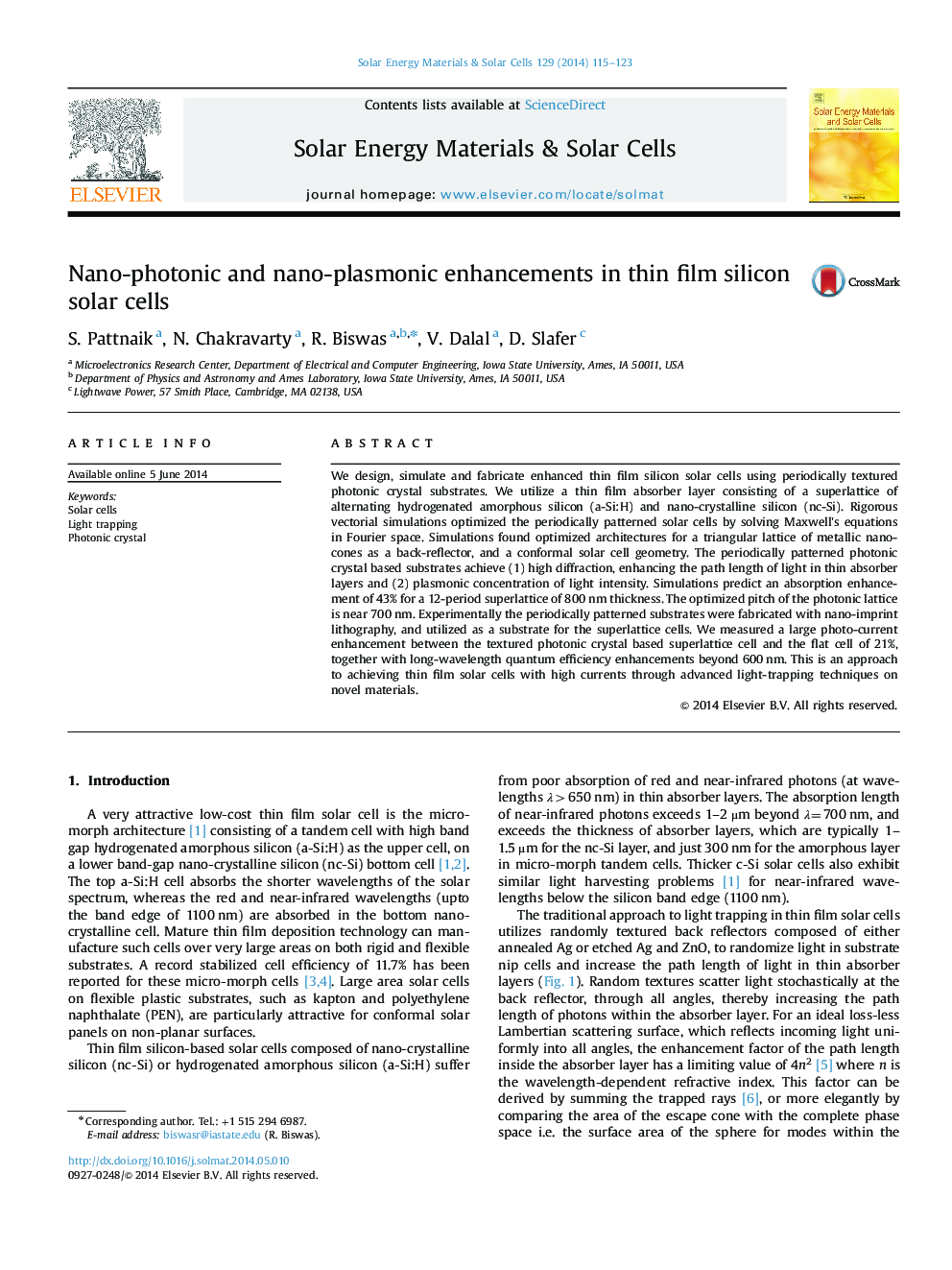| Article ID | Journal | Published Year | Pages | File Type |
|---|---|---|---|---|
| 78037 | Solar Energy Materials and Solar Cells | 2014 | 9 Pages |
•Nano-photonic and nano-plasmonic light trapping in thin films.•Optical absorption near the Lambertian limit.•Nano imprint lithography for periodic back reflectors.•Thin film superlattice absorbers.
We design, simulate and fabricate enhanced thin film silicon solar cells using periodically textured photonic crystal substrates. We utilize a thin film absorber layer consisting of a superlattice of alternating hydrogenated amorphous silicon (a-Si:H) and nano-crystalline silicon (nc-Si). Rigorous vectorial simulations optimized the periodically patterned solar cells by solving Maxwell׳s equations in Fourier space. Simulations found optimized architectures for a triangular lattice of metallic nano-cones as a back-reflector, and a conformal solar cell geometry. The periodically patterned photonic crystal based substrates achieve (1) high diffraction, enhancing the path length of light in thin absorber layers and (2) plasmonic concentration of light intensity. Simulations predict an absorption enhancement of 43% for a 12-period superlattice of 800 nm thickness. The optimized pitch of the photonic lattice is near 700 nm. Experimentally the periodically patterned substrates were fabricated with nano-imprint lithography, and utilized as a substrate for the superlattice cells. We measured a large photo-current enhancement between the textured photonic crystal based superlattice cell and the flat cell of 21%, together with long-wavelength quantum efficiency enhancements beyond 600 nm. This is an approach to achieving thin film solar cells with high currents through advanced light-trapping techniques on novel materials.
Graphical abstractWe develop a pathway to achieving thin film silicon solar cells with high currents through advanced light-trapping techniques on novel superlattice materials with alternating amorphous and nano-crystalline layers. We utilize periodically textured photonic crystal based substrates to achieve (1) high diffraction, enhancing the path length of light in thin absorber layers and (2) plasmonic concentration of light intensity. Rigorous simulations where Maxwell׳s equations are solved in Fourier space, found optimized architectures for a triangular lattice of metallic nanocones as a back-reflector, and a conformal solar cell geometry with an absorption enhancement factor of 43% for a 12 layer 800 nm thick superlattice. Experimentally the periodically textured substrates were obtained with nano-imprint lithography. We describe experimental and theoretical results for solar cell absorber layers of a superlattice of amorphous and nanocrystalline silicon. We measured a large photo-current enhancement between the textured photonic crystal and the flat substrate 21% for the amorphous-nanocrystalline superlattice cells. Figure optionsDownload full-size imageDownload as PowerPoint slide
